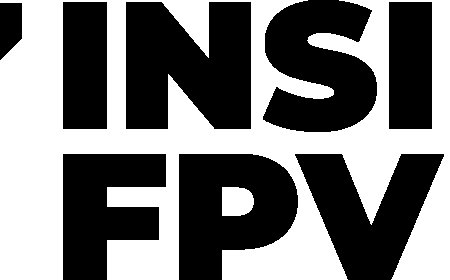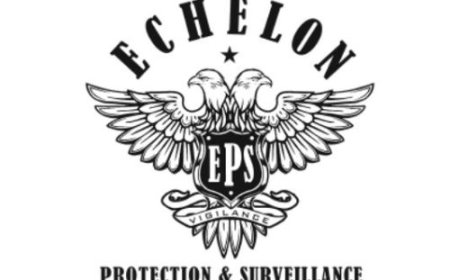CE Marking Training: Who’s Doing What—and Why It Matters More Than You Think
CE marking training is a course that enables individuals to understand the requirements to help an organization get CE Certified for their products.

Lets face it: when someone mentionsCE Marking, most people either nod like they totally understand or give that lookeyebrows slightly up, eyes glazing over, brain whispering, Is this my problem?
But heres the truth: CE Marking isnt just a tick box for the quality department. Its not something you leave for the engineers to handle eventually. Its a legal requirement. And if youre anywhere in the product lifecyclefrom design to shipping, from marketing to maintenanceyouve got a role to play. The catch? Most folks have no idea what that role actually is.
Thats where CE Marking training steps in. And no, were not talking about dry PowerPoints or rulebooks with too many acronyms. Real CE Marking training gets to the heart of something surprisingly human: responsibility. Whos responsible for what. When. And what happens when they miss something.
So, if youve ever felt unsure about your place in the CE processor if you're managing a team that could use a little claritythis article is your backstage pass. Were unpacking why this training matters, what it looks like, and how it brings clarity to the chaos. Lets get into it.
CE Marking: More Than Just a Sticker
First things firstwhat is CE Marking really?
At its core, CE Marking is a self-declaration that your product meets all applicable EU safety, health, and environmental protection standards. That little "CE" logo isnt just a symbolit's a legal promise. If its wrong, incomplete, or missing? You could face market recalls, hefty fines, or even bans.
Now heres where it gets messy: the CE Marking process touches so many functions. Engineering. Quality. Legal. Regulatory Affairs. Marketing. Shipping. Suddenly, everyones involvedbut not everyone knows how or why.
CE Marking training is about drawing the lines clearly. No guessing. No finger-pointing. Just solid, shared understanding.
Why Roles Get Fuzzyand Risky
Picture this: a company launches a new medical device. Its sleek, functional, and packed with features. But six months later, its pulled off shelves. Why? The documentation was incomplete. The testing lab didnt understand the right standard to apply. Regulatory thought engineering had it covered. Engineering thought compliance was driving. And the truth? No one was at the wheel.
This kind of scenario plays out more often than wed like to admit. The reason? Undefined roles. Or worseassumed ones.
Without proper CE Marking training:
-
People dont know their legal obligations.
-
Critical steps get skipped or delayed.
-
Teams duplicate effortsor miss them entirely.
-
Deadlines slip. Launches stall. Risk skyrockets.
And the irony? All of it is preventable.
So, What Does CE Marking Training Actually Teach?
You know whats underrated? Clarity. Thats exactly what CE Marking training brings.
Heres a quick breakdown of what solid training usually covers:
-
The Legal Framework What regulations apply to your product? Are you working under the Machinery Directive, Low Voltage Directive, MDR, or something else?
-
Product Classification Not everything needs CE Marking. Some products fall outside the scope. Others require Notified Body involvement. Knowing the difference? Critical.
-
Technical Documentation What needs to go in your technical file? Whos writing it? Who signs off?
-
Risk Assessment Its not just a checkbox. Its an ongoing activityespecially when product design changes mid-project (as it often does).
-
Roles & Responsibilities From design engineers to marketing managers, each player has a part. Training walks through what those parts look like.
-
Declaration of Conformity Who signs it? What must it include? When is it due?
And if you think thats just for regulatory teams, think again. Everyone from supply chain coordinators to customer service leads benefits from knowing how the product gets legally placed on the EU market.
Lets Talk Real-Life Impact (Because Its Not All Theory)
A client of ourslets call them BlueLight Technologieswas launching a range of smart lighting products across Europe. They had engineers writing specs, legal reviewing directives, and marketing prepping labels. What they didnt have? A shared training session on CE Marking.
Result? The labels went to print missing key CE information. The tech file didnt cover electromagnetic compatibility. A last-minute panic led to shipment delays, lost retailer trust, and internal blame games.
Fast forward three monthsthey invested in team-wide CE Marking training.
Now? Engineers know what needs testing (and when). Marketing knows when to ask for legal review. Regulatory has a checklist for release. The result? Smoother launches, zero recalls, and yes, a lot less stress.
Its not magic. Its just clarity.
Wait, Whos Responsible for What, Again?
This question pops up more than youd think. So lets clarify how CE Marking responsibilities typically shake out across departments:
-
Design & Engineering
They select components, design around safety, and often conduct initial risk assessments. They're also involved in testing and document drafting. -
Quality & Regulatory
This team ensures compliance with directives, updates the technical file, and often signs or supports the Declaration of Conformity. -
Project Management
PMs coordinate timelines and ensure CE-related milestones are baked into the product development cyclenot an afterthought. -
Legal
They help interpret EU directives, review contracts with Notified Bodies, and ensure documentation language is up to scratch. -
Marketing & Sales
Yes, really. They need to make sure promotional claims match the approved usage scope and that CE information on packaging is accurate. -
Customer Support & Operations
Post-market surveillance? Product complaints? These feed back into the risk management process.
CE Marking training lays this all out in plain English, customized to your business. Because knowing whos responsible isnt just helpfulits necessary.
What Does Training Look Like?
Theres no one-size-fits-all answer here. But good CE Marking training is interactive, real-world, andhonestlya bit eye-opening.
You might get:
-
Scenario-based learning: What happens if your packaging changes mid-launch?
-
Cross-functional workshops: Engineers and marketing teams actually talk (yes, miracles do happen)
-
Directive-specific deep dives: Especially helpful if you work in sectors like medical devices, toys, or machinery
-
Audit simulations: Because nothing wakes people up like a pretend regulator asking questions
It can be half-day sessions, full-day workshops, or staggered modules. The format matters less than the engagement. If it feels like people are just nodding along, its not working.
Why Clarity Now Matters More Than Ever
Lets be honestregulations are shifting. Brexit added complexity. The EU keeps tightening the screws on product safety and surveillance. Notified Bodies are stretched. And customers? They expect transparency.
CE Marking is no longer just a Europe thing. Its tied into global trade, product integrity, andyesyour reputation.
With clearer roles, your teams can:
-
Launch faster, with fewer compliance headaches
-
Reduce rework, last-minute panic, and internal finger-pointing
-
Respond confidently to audits, questions, and challenges
-
Scale product lines without scaling confusion
And you know what? It also boosts morale. When people know their roleand trust that others know theirsteams work better. Theres less tension. More collaboration. Fewer dropped balls.
The Bottom Line: Know Your Part, Play It Well
CE Marking training isnt just for ticking off requirements. Its about making sure everyone knows what part they playand plays it like a pro. Because in a product launch, every role matters. From the first sketch to the final shipment, from email signatures to printed labelsdetails make or break compliance.
Training makes those details clear. It connects the dots. It removes the guesswork. And when youve got that clarity? Everything moves faster. Smarter. Cleaner. So, whether you're new to CE Marking or just tired of the confusionget trained. Not someday. Now. Your products legal future might just depend on it.







































![Play99 Login & Registration Guide for Indian Users [2025 Update]](https://www.atlantanewsplus.com/uploads/images/202507/image_140x98_6870c1df7bfcd.jpg)